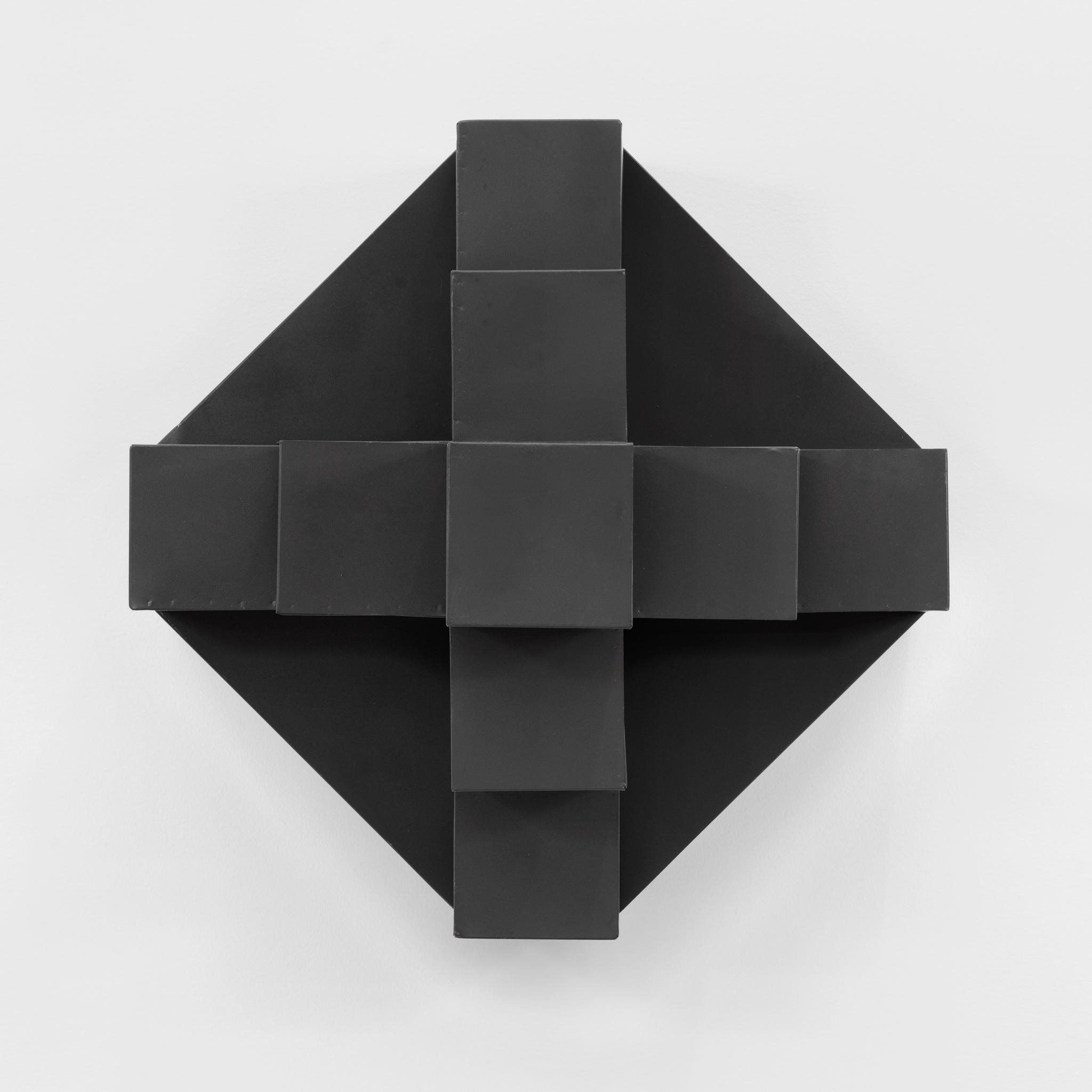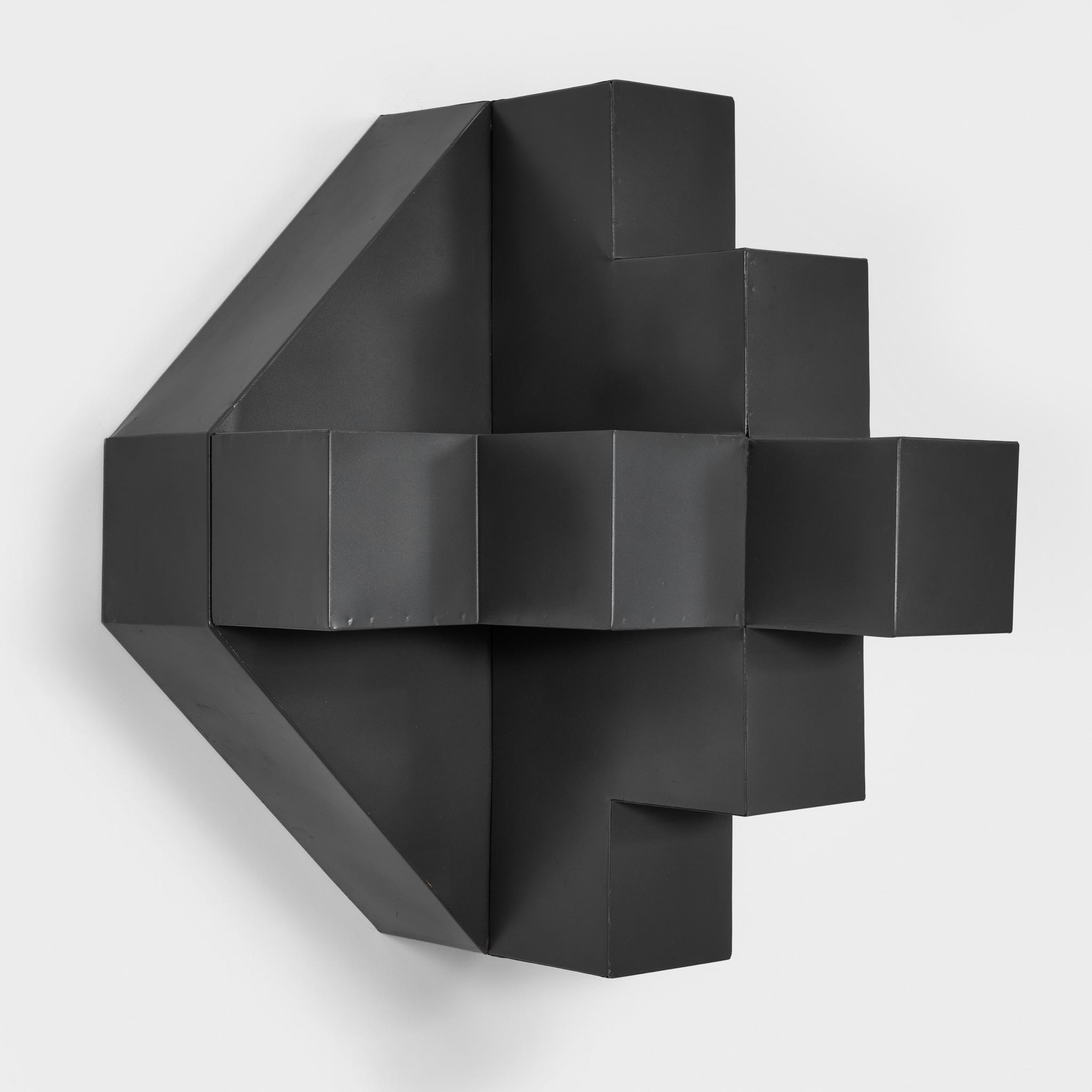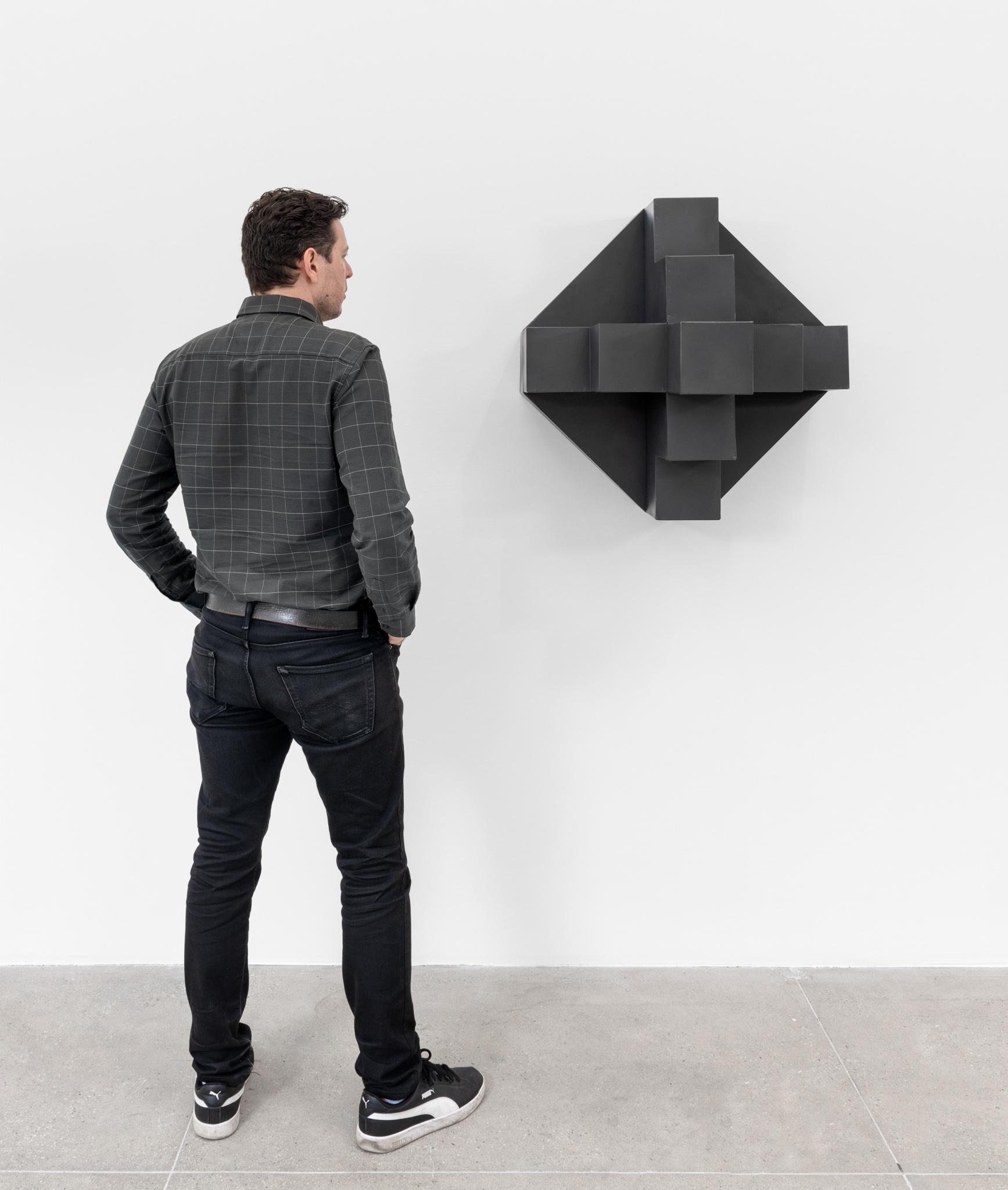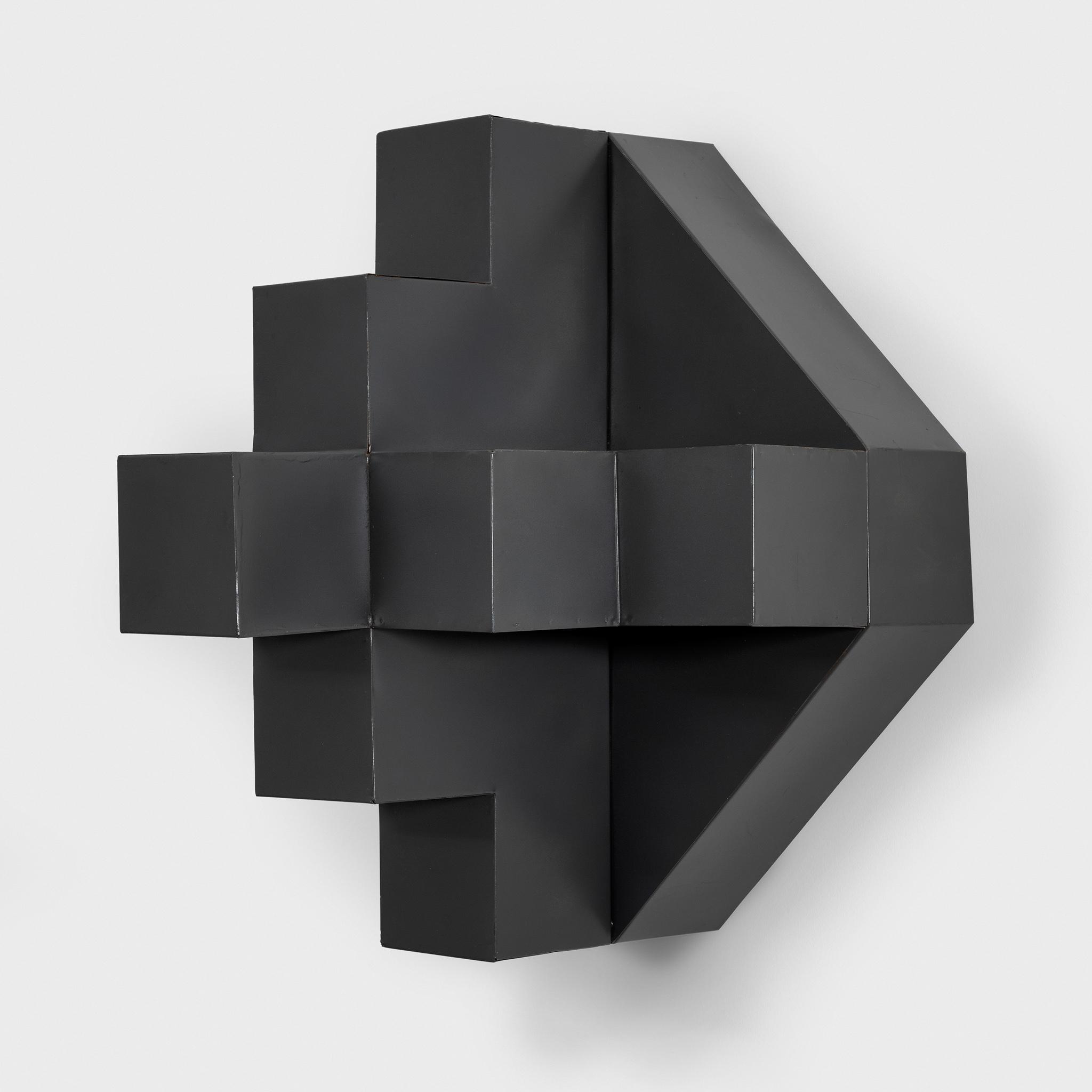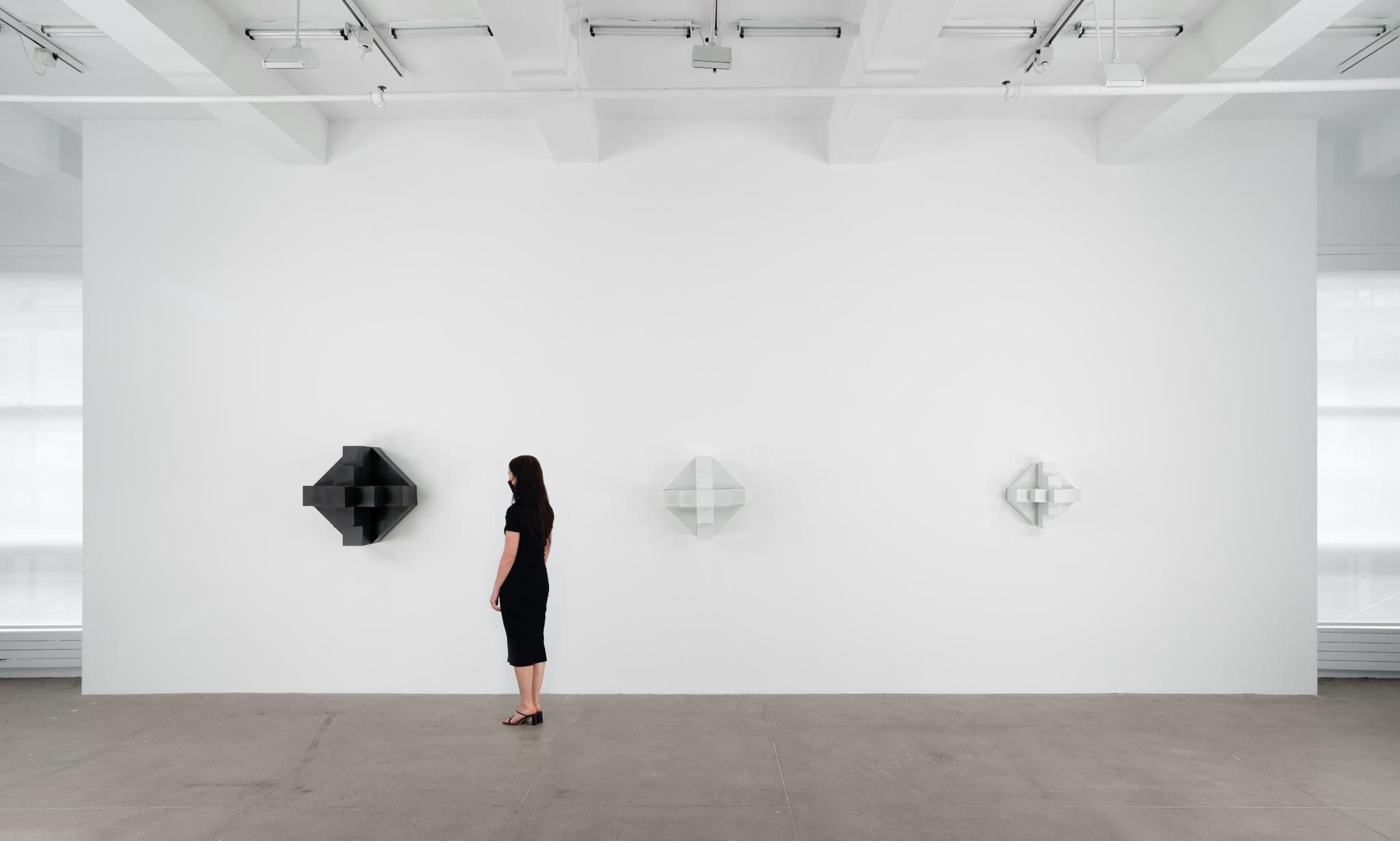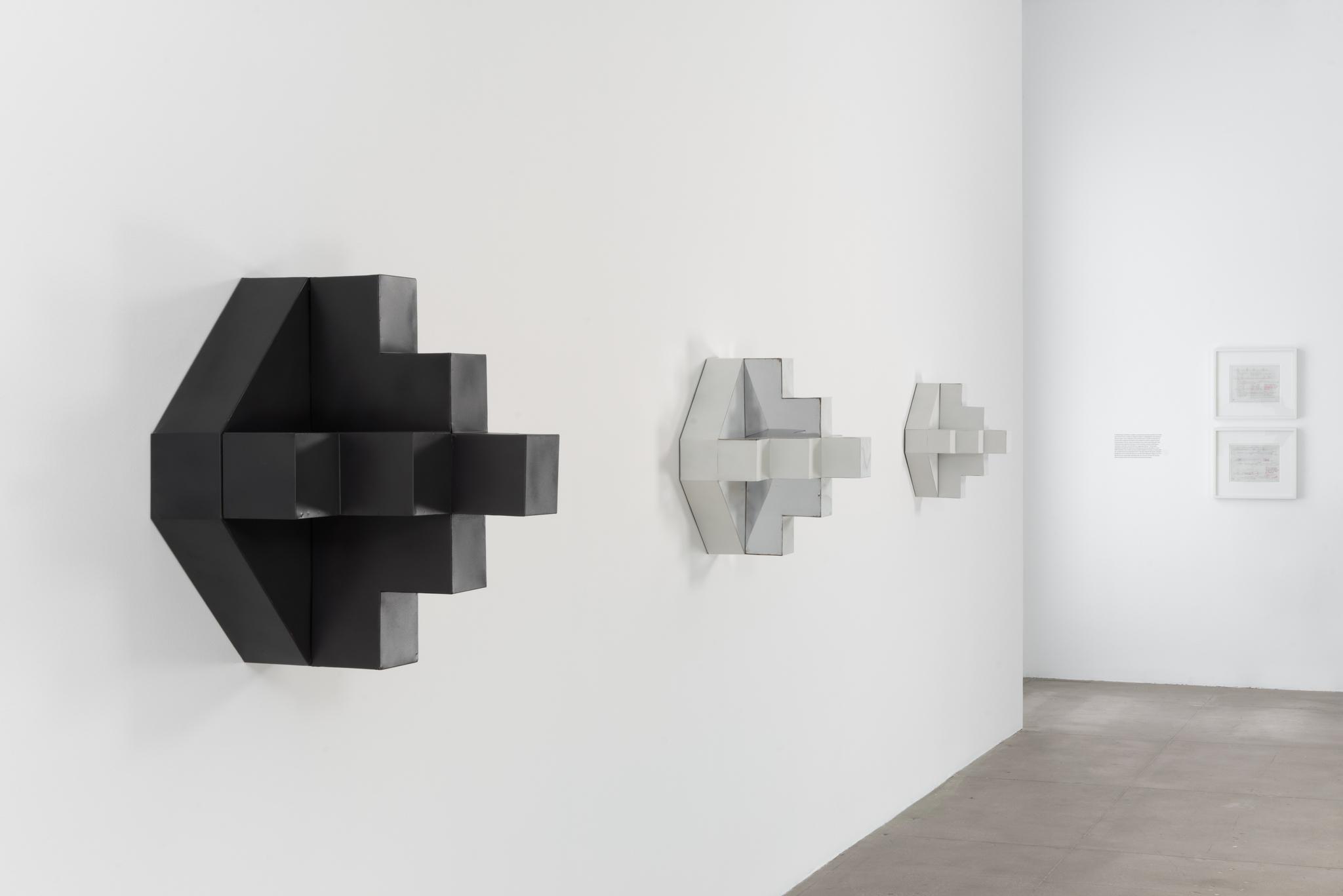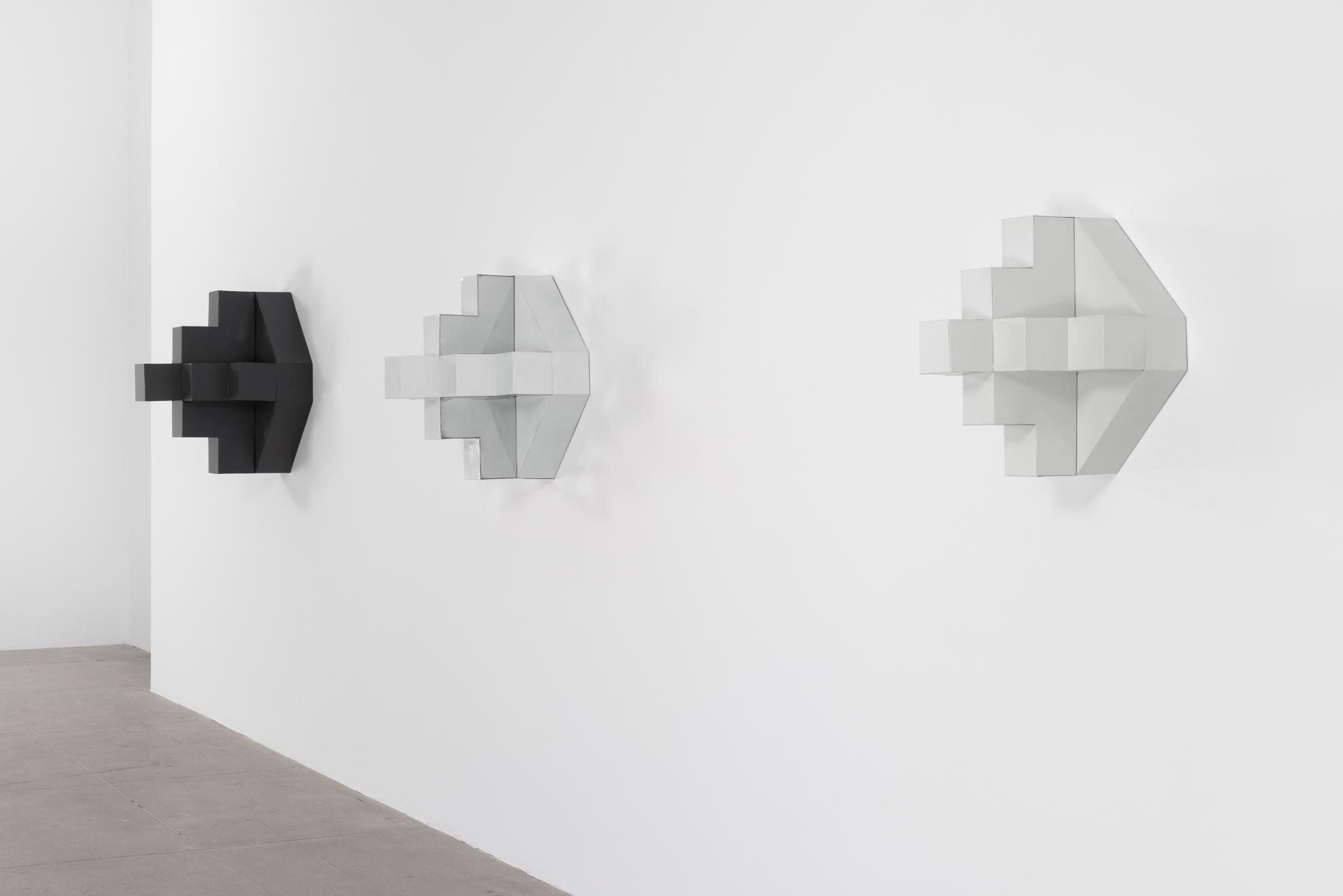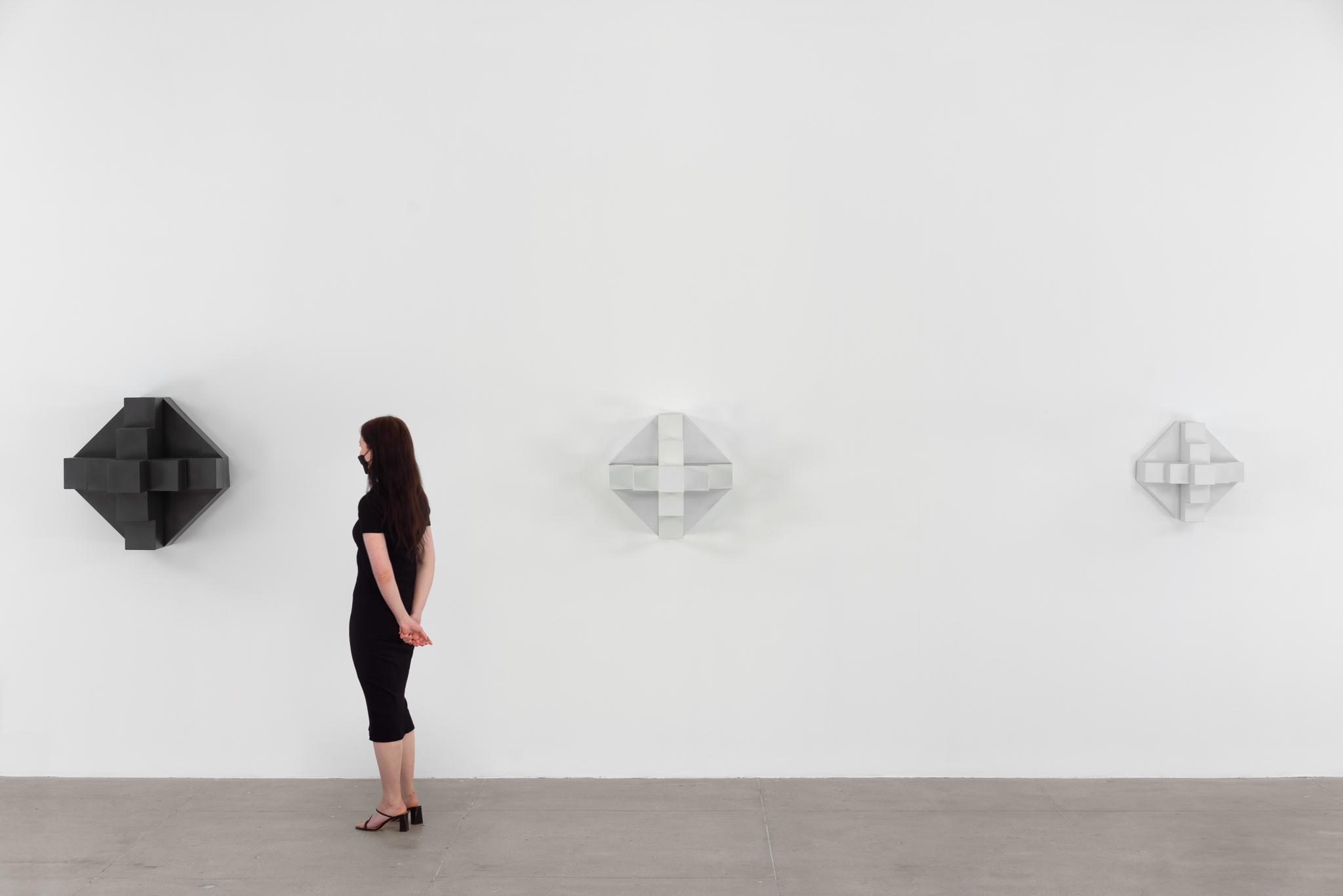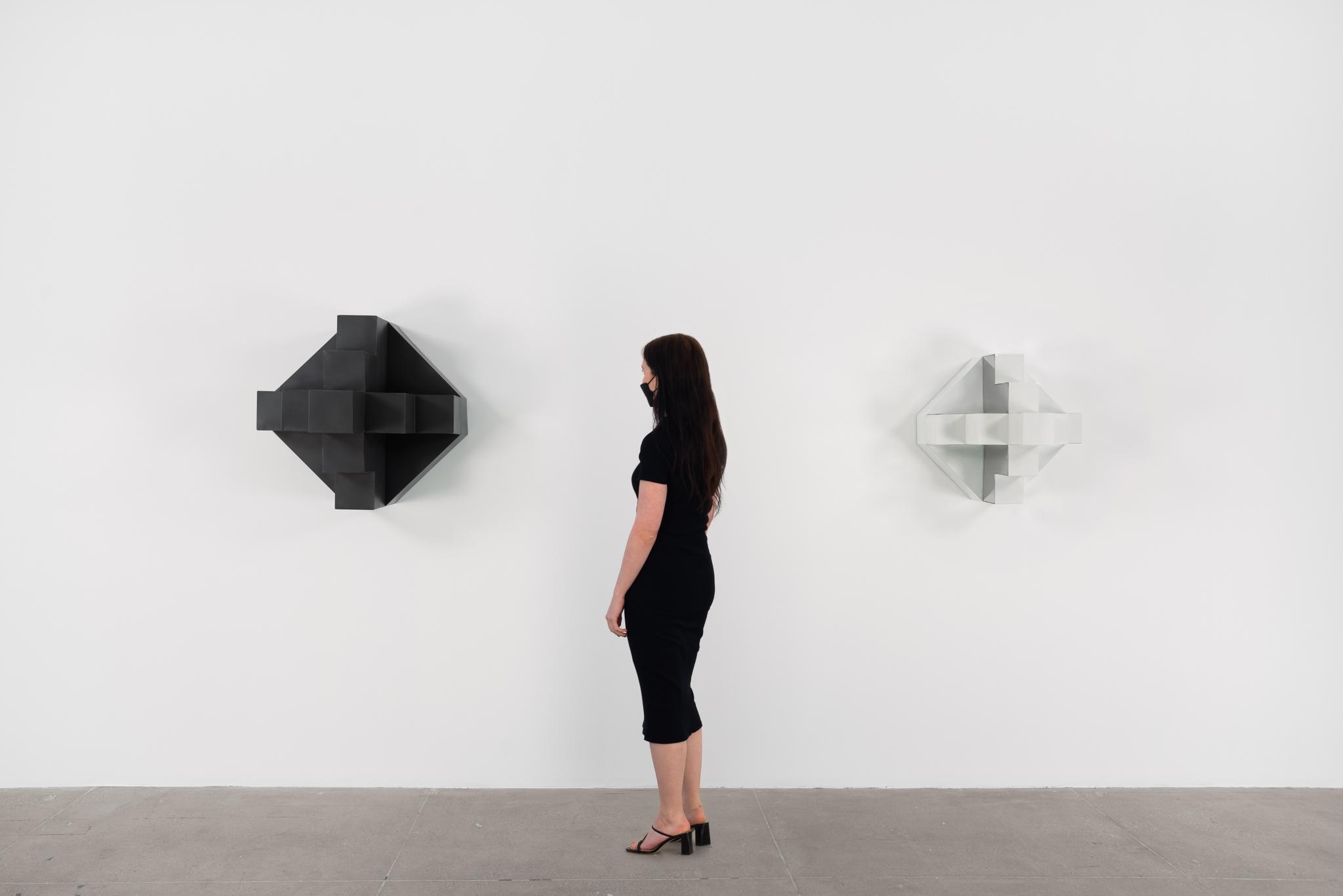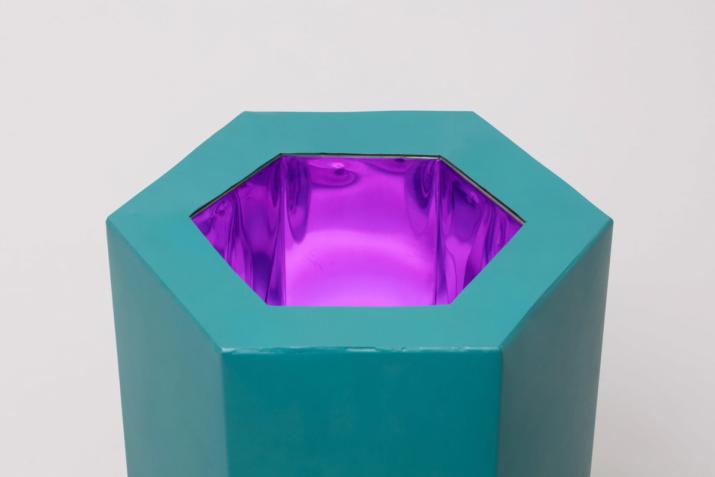Untitled
In 1966 Robert Smithson created a series of untitled geometric metal sculptures that hang from the wall, inspired by his interest in crystallography, which can be seen in a number of works on paper in the mid-1960s. Each sculpture within this body of work is unique in size and material, with some painted black, white, or gray, while others incorporate chrome polished reflective metal. This series is of great importance within Smithson’s oeuvre: it marks the moment when he created what Robert Hobbs referred to as "quasi-Minimalist sculptures," which led to his development of earthworks and Nonsites. Unlike the metal sculptures by his artist-contemporaries associated with Minimalism, Smithson's sculptures bear the traces of being made by hand rather than by machine. In a 1973 interview with Moira Roth, Smithson articulated, "In my early works I was not really Minimal; the works were more related to crystallized notions about abstraction. So there was a tendency toward abstraction, but I never thought of isolating my objects in any particular way."
Works from this 1966 series are in the following public collections: Dia Art Foundation; Museum of Modern Art, New York; Whitney Museum of American Art, New York; and the Modern Art Museum of Fort Worth. 1966 was the year when Smithson started working as an artist consultant on the Dallas Fort-Worth airport project, a time when he described the "inklings of the earthworks" began. These ziggurat-like forms can be seen in his earthwork ideas for this unrealized project.

